18: CANCER RISK FROM EXPOSURE TO LOW LEVELS OF IONIZING RADIATION BY HERBERT ABRAMS
Beyea, J., and M. Bricker. “Risks of Exposure to Low-Level Radiation.” Bulletin of the Atomic Scientists 68 (2012).
HERBERT ABRAMS is emeritus professor of radiology at Stanford University and a member of the Biological Effects of Ionizing Radiation (BEIR) Committee of the National Academy of Sciences.
ROBERT ALVAREZ is a senior scholar at the Institute for Policy Studies.
DAVID BRENNER is the Higgins Professor of Radiation Biophysics at the College of Physicians and Surgeons at Columbia University.
IAN FAIRLIE is a radiation biologist and an independent consultant on radiation risks. He is also the former scientific secretary to the British government’s Committee Examining Radiation Risks of Internal Emitters.
CINDY FOLKERS is a specialist in radiation and health for Beyond Nuclear.
DAVID FREEMAN is the former chairman of the Tennessee Valley Authority and the former general manager of the Los Angeles Department of Water and Power, the New York Power Authority, and the Sacramento Municipal Utility District.
ARNOLD GUNDERSEN is a nuclear engineer at Fairewinds Energy Education.
KEVIN KAMPS is a specialist in high-level waste management and transportation at Beyond Nuclear.
NAOTO KAN is the former prime minister of Japan.
HIROAKI KOIDE is a specialist in radiation safety and control at the Kyoto University Research Reactor Institute.
DAVID LOCHBAUM is the director of the Union of Concerned Scientists Nuclear Safety Project.
AKIO MATSUMURA is the founder of the Global Forum of Spiritual and Parliamentary Leaders.
TIMOTHY MOUSSEAU is a professor of biological sciences at the University of South Carolina.
MARY OLSON is the director of the Southeast Office of the Nuclear Information and Resource Service.
HISAKO SAKIYAMA is a former senior researcher at the National Institute of Radiological Sciences. She was also a member of the Fukushima Nuclear Accident Independent Investigation Commission.
STEVEN STARR is a senior scientist at Physicians for Social Responsibility and the director of the Clinical Laboratory Science Program at the University of Missouri.
WLADIMIR WERTELECKI is the president of the board of the OMNI-Net Ukraine child development programs and an adjunct professor of biomedical anthropology at the State University of New York.
STEVEN WING is an associate professor of epidemiology at the Gillings School of Global Public Health at the University of North Carolina.
ALEXEY V. YABLOKOV is a member of the Russian Academy of Sciences.
The world’s leading spokesperson for the antinuclear movement, DR. HELEN CALDICOTT is the co-founder of Physicians for Social Responsibility, a nominee for the Nobel Peace Prize, and the 2003 winner of the Lannan Prize for Cultural Freedom. Both the Smithsonian Institute and Ladies’ Home Journal have named her one of the Most Influential Women of the Twentieth Century. In 2001, she founded the Nuclear Policy Research Institute, which later became Beyond Nuclear, in Washington, D.C. The author of The New Nuclear Danger, War in Heaven (with Craig Eisendrath), Nuclear Power Is Not the Answer , and Loving This Planet (all published by The New Press), she is currently president of the Helen Caldicott Foundation/NuclearFreePlanet.org.
Publishing in the Public Interest
Thank you for reading this book published by The New Press. The New Press is a nonprofit, public interest publisher. New Press books and authors play a crucial role in sparking conversations about the key political and social issues of our day.
We hope you enjoyed this book and that you will stay in touch with The New Press. Here are a few ways to stay up to date with our books, events, and the issues we cover:
• Sign up at www.thenewpress.com/subscribeto receive updates on New Press authors and issues and to be notified about local events
• Like us on Facebook: www.facebook.com/newpressbooks
• Follow us on Twitter: www.twitter.com/thenewpress
Please consider buying New Press books for yourself; for friends and family; or to donate to schools, libraries, community centers, prison libraries, and other organizations involved with the issues our authors write about.
The New Press is a 501(c)(3) nonprofit organization. You can also support our work with a tax-deductible gift by visiting www.thenewpress.com/donate.
Compilation © 2014 by Helen Caldicott. Adapted from the symposium “The Medical and Ecological Consequences of Fukushima,” held at the New York Academy of Medicine, March 11–12, 2013.
All rights reserved.
No part of this book may be reproduced, in any form, without written permission from the publisher.
Requests for permission to reproduce selections from this book should be mailed to: Permissions Department, The New Press, 120 Wall Street, 31st floor, New York, NY 10005.
Published in the United States by The New Press, New York, 2014
Distributed by Perseus Distribution
LIBRARY OF CONGRESS CATALOGING-IN-PUBLICATION DATA
Crisis without end : the medical and ecological consequences of the Fukushima nuclear catastrophe / edited by Helen Caldicott.
pages cm
“From the symposium at the New York Academy of Medicine, March 11-12, 2013.”
Includes bibliographical references.
ISBN 978-1-59558-970-5 (e-book) 1. Fukushima Nuclear Disaster, Japan, 2011. 2. Nuclear power plants--Accidents--Japan. I. Caldicott, Helen, editor.
TK1365.J3C75 2014
363.17'990952117--dc23
2014023689
The New Press publishes books that promote and enrich public discussion and understanding of the issues vital to our democracy and to a more equitable world. These books are made possible by the enthusiasm of our readers; the support of a committed group of donors, large and small; the collaboration of our many partners in the independent media and the not-for-profit sector; booksellers, who often hand-sell New Press books; librarians; and above all by our authors.
www.thenewpress.com
Book design and composition by Bookbright Media
This book was set in Jansen Text
10987654321
“Japan Sat on U.S. Radiation Maps Showing Immediate Fallout from Nuke Crisis,” Japan Times , June 18, 2012.
E. Bagge, A. Bjelle, S. Eden, and A. Svanborg, “Osteoarthritis in the Elderly: Clinical and Radiological Findings in 79 and 85 Year Olds,” Annals of the Rheumatic Diseases 50, no. 8 (1991): 535–39. Epub 1991/08/01.
Ibid.
A.V. Yablokov, V.B. Nesterenko, A.V. Nesterenko, and J.D. Sherman-Nevinger, Chernobyl: Consequences of the Catastrophe for People and the Environment (New York: Wiley, 2010).
Fukushima Health Management, Proceedings of the 15th Prefectural Oversight Committee Meeting for Fukushima Health Management Survey , Fukushima, Japan, 2014.
A.P. Møller and T.A. Mousseau, “The Effects of Low-Dose Radiation: Soviet Science, the Nuclear Industry—and Independence?,” Significance 10, no. 1 (2013): 14–19.
For example, the Norwegian Institute for Air Research estimates that the destroyed nuclear reactors at Fukushima released 2.5 times more radioactive xenon-133 gas than the destruction of the nuclear reactor at Chornobyl. Xenon-133 has a half-life of about five days, so in two months most of it had disappeared from the environment. But the winds from Fukushima carried a giant cloud of xenon-133 directly over the Tokyo metropolitan area, where (according to the Japan Chemical Analysis Center) it averaged 1,300 atomic disintegrations per second in every cubic meter of air from March 14 through March 22, 2011. The Japanese government chose not to warn people in Tokyo to take any precautions.
Читать дальше
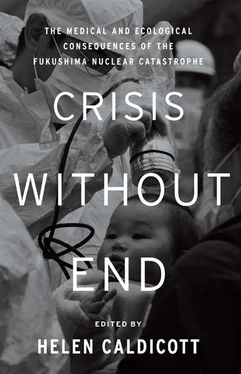
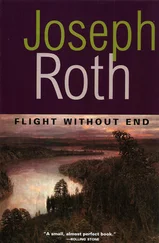
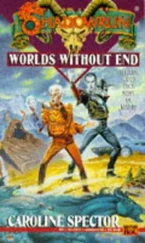

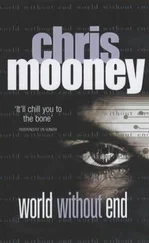

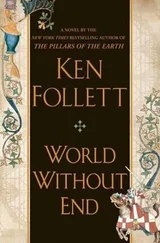
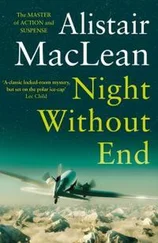
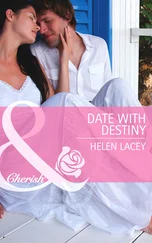
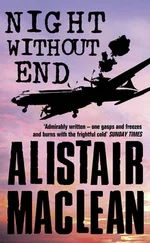
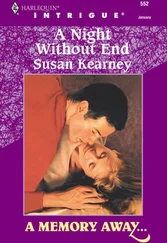

![Helen Rowland - The Widow [To Say Nothing of the Man]](/books/752764/helen-rowland-the-widow-to-say-nothing-of-the-man-thumb.webp)